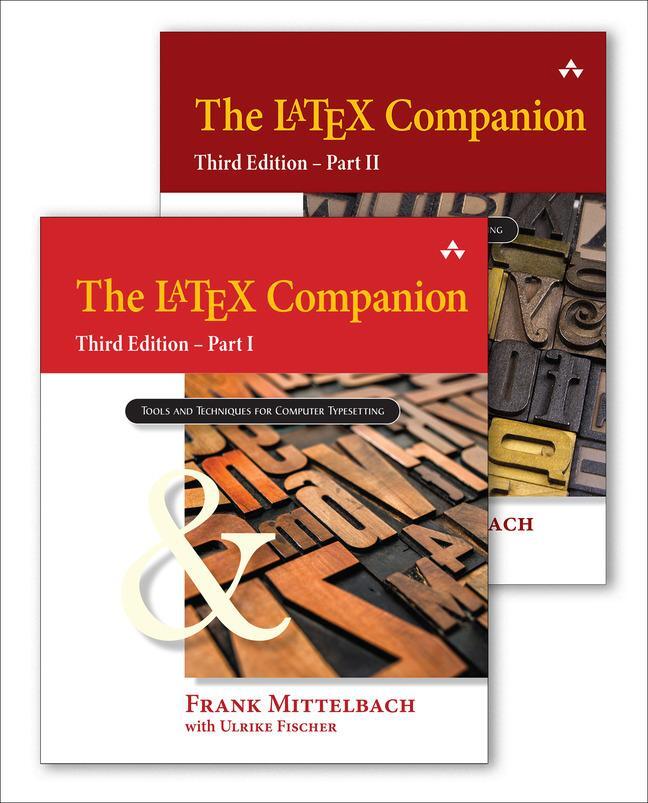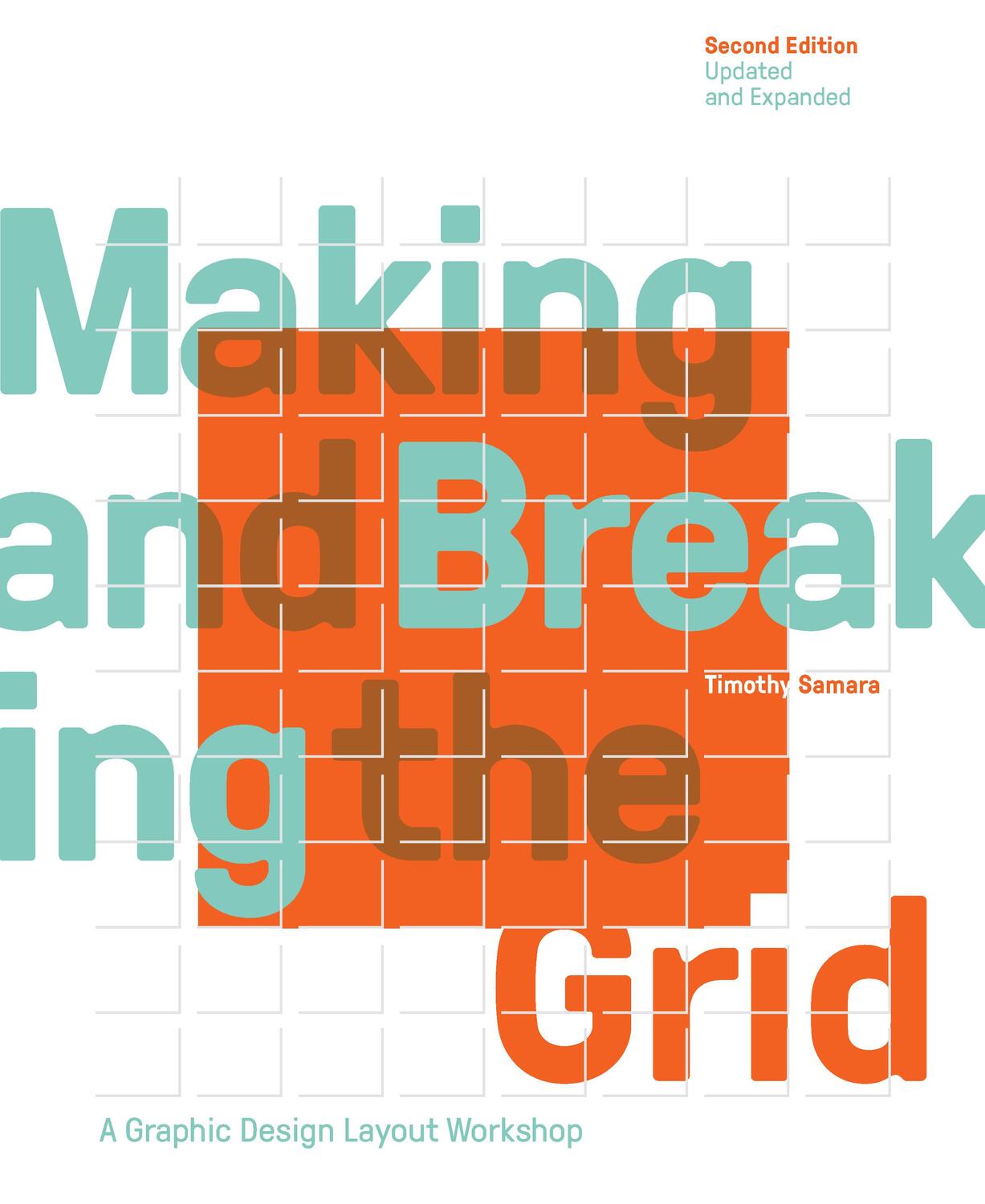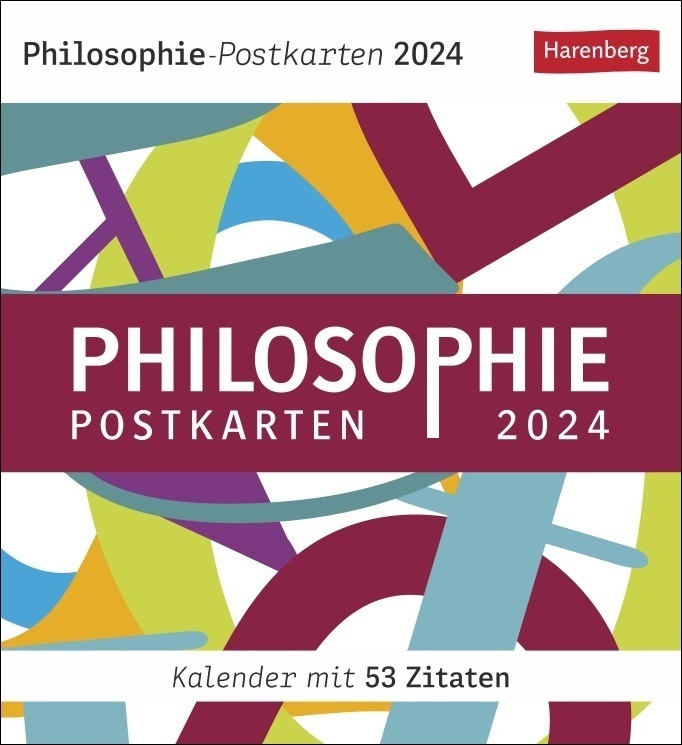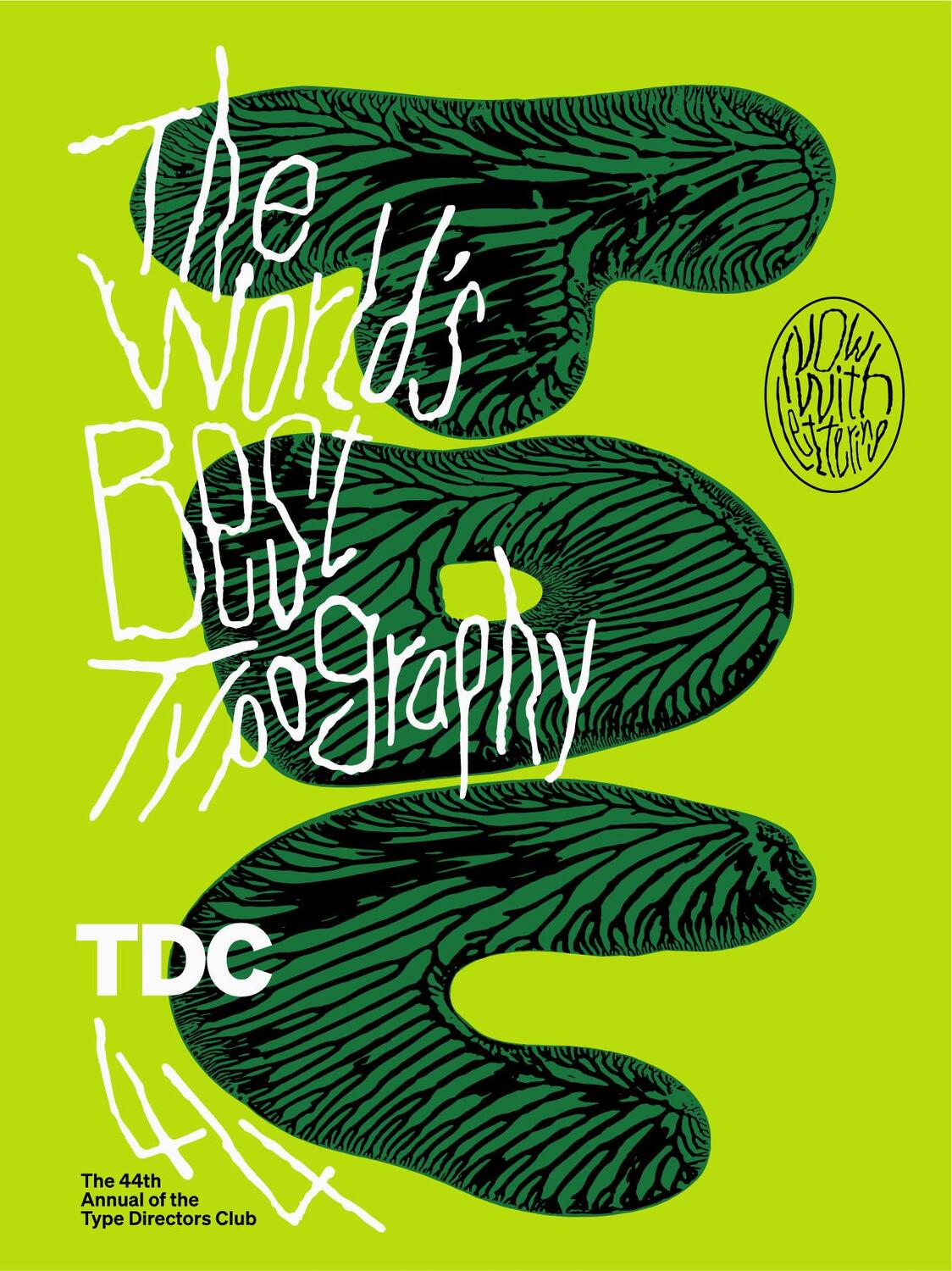112,50 €*
Versandkostenfrei per Post / DHL
Aktuell nicht verfügbar
Frank Mittelbach is the lead author of The LaTeX Companion, Third Edition, and is series editor of Addison-Wesley's Tools and Techniques for Computer Typesetting series. He is also technical lead of the LaTeX Project and, along with overseeing the original major release of LaTeX2_ in 1994, he has overseen the 36 subsequent releases of this software. Frank is author or coauthor of several books and of many and varied LaTeX extension packages, such as AMS-LaTeX, doc, multicol, and NFSS: the New Font Selection Scheme. He is on the board of the International Gutenberg Society, an international association for the study of the history and development of printing technology and font-oriented media, where he focuses on the more recent period. He is currently leading a multi-year project for automatically producing tagged and accessible PDF output from LaTeX.
Ulrike Fischer lives with her husband in Bonn, Germany. After studying mathematics at the University of Bonn, Ulrike became interested in the internal handling of fonts and in chess typesetting. With the help of the first edition of The LaTeX Companion, she wrote at the chessfss package, which allows users to choose between various chess fonts, and other chess-related packages. She joined the LaTeX Project after the TUG meeting in Rio de Janeiro, where she presented her package tagpdf to create tagged PDFs to the team members. Together with other members of the LaTeX Project she now maintains various packages including luaotfload, hyperref, xcolor, the new LaTeX PDF management code and more.
Part I:
List of Figures xxviii
List of Tables xxxi
Foreword xxxvii
Preface xxxix
Chapter 1: Introduction 1
1.1 A brief history (of nearly half a century) 1
1.2 Today's systems 8
1.3 Working with this book 13
Chapter 2: The Structure of a LaTeX Document 21
2.1 The overall structure of a source file 22
2.2 Sectioning commands 32
2.3 Table of contents structures 54
2.4 Managing references 75
2.5 Document source management 108
Chapter 3: Basic Formatting Tools -- Paragraph Level 119
3.1 Shaping your paragraphs 120
3.2 Dealing with special characters 147
3.3 Generated or specially formatted text 154
3.4 Various ways of highlighting and quoting text 177
3.5 Footnotes, endnotes, and marginals 204
3.6 Support for document development 237
Chapter 4: Basic Formatting Tools -- Larger Structures 253
4.1 Lists 254
4.2 Simulating typed text 296
4.3 Lines and columns 333
4.4 Generating sample texts 361
Chapter 5: The Layout of the Page 365
5.1 Geometrical dimensions of the layout 366
5.2 Changing the layout 368
5.3 Dynamic page data: page numbers and marks 385
5.4 Page styles 395
5.5 Page decorations and watermarks 409
5.6 Visual formatting 414
5.7 Doing layout with class 429
Chapter 6: Tabular Material 431
6.1 Standard LaTeX environments 432
6.2 array -- Extending the tabular environments 437
6.3 Calculating column widths 446
6.4 Multipage tabular material 456
6.5 Color in tables 466
6.6 Customizing table rules and spacing 467
6.7 Other extensions 476
6.8 Footnotes in tabular material 491
6.9 keyvaltable -- Separating table data and formatting 494
6.10 tabularray -- Late breaking news 504
Chapter 7: Mastering Floats 505
7.1 An overview of LaTeX's float concepts 506
7.2 Float placement control 519
7.3 Extensions to LaTeX's float concept 528
7.4 Controlling the float caption 538
7.5 Key/value approaches for floats and subfloats 560
Chapter 8: Graphics Generation and Manipulation 575
8.1 LaTeX's image loading support 576
8.2 Manipulating graphical objects in LaTeX 587
8.3 Producing (fairly) portable line graphics 602
8.4 Flexible boxes for multiple purposes 614
8.5 tikz -- A general-purpose graphics system 631
Chapter 9: Font Selection and Encodings 647
9.1 Introduction 648
9.2 Understanding font characteristics 652
9.3 Using fonts in text 658
9.4 Using fonts in math 676
9.5 Standard LaTeX font support 683
Part II (page numbers begin with "II"):
Foreword, Part II II v
Preface, Part II II vii
Chapter 10: Text and Symbol Fonts II 1
10.1 Overview II 2
10.2 Samples of larger font families II 11
10.3 Humanist (Oldstyle) serif fonts II 36
10.4 Garalde (Oldstyle) serif fonts II 38
10.5 Transitional/Neoclassical serif fonts II 46
10.6 Didone (Modern) serif fonts II 60
10.7 Slab serif (Egyptian) fonts II 64
10.8 Sans serif fonts II 67
10.9 Monospaced (typewriter) fonts II 88
10.10 Historical and other fonts II 97
10.11 Fonts supporting Latin and polytonic Greek II 106
10.12 Fonts supporting Latin and Cyrillic II 110
10.13 The LaTeX world of symbols II 113
Chapter 11: Higher Mathematics II 127
11.1 Introduction to amsmath and mathtools II 128
11.2 Display and alignment structures for equations II 131
11.3 Matrix-like environments II 153
11.4 Compound structures and decorations II 163
11.5 Variable symbol commands II 180
11.6 Words in mathematics II 191
11.7 Fine-tuning the mathematical layout II 194
11.8 Symbols in formulas II 208
Chapter 12: Fonts in Formulas II 225
12.1 The world of (Latin) math alphabets II 226
12.2 Making it bold II 235
12.3 Traditional math font setup through packages II 238
12.4 unicode-math -- Using Unicode math fonts II 253
12.5 A visual comparison of different math setups II 261
Chapter 13: Localizing Documents II 297
13.1 TEX and nonEnglish languages II 297
13.2 The babel user interface II 301
13.3 User commands provided by language options II 308
13.4 Support for Cyrillic and Greek II 324
13.5 Complex scripts II 330
13.6 Tailoring babel II 332
13.7 Other approaches II 341
Chapter 14: Index Generation II 343
14.1 Syntax of the index entries II 345
14.2 MakeIndex -- A program to sort and format indexes II 350
14.3 upmendex -- A Unicode-aware indexing program II 364
14.4 xindy, xindex -- Two other indexing programs II 370
14.5 Enhancing the index with LaTeX features II 371
Chapter 15: Bibliography Generation II 375
15.1 The standard LaTeX bibliography environment II 376
15.2 The biber and BibTeX programs II 378
15.3 The BibTeX database format II 380
15.4 Using BibTeX or biber to produce the bibliography II 409
15.5 On-line bibliographies II 413
15.6 Bibliography database management tools II 414
15.7 Formatting the bibliography with styles II 418
Chapter 16: Managing Citations II 469
16.1 Introduction II 469
16.2 The number-only system II 473
16.3 The author-date system II 487
16.4 The author-number system II 502
16.5 The author-title system II 507
16.6 The verbose system II 537
16.7 biblatex -- One ring to rule them all II 541
16.8 Multiple bibliographies in one document II 569
Chapter 17: LaTeX Package Documentation Tools II 583
17.1 doc -- Documenting LaTeX and other code II 584
17.2 docstrip.tex -- Producing ready-to-run code II 599
17.3 l3build -- A versatile development environment II 606
17.4 Making use of version control tools II 615
Appendix A: LaTeX Overview for Preamble, Package, and Class Writers II 621
A.1 Linking markup and formatting II 622
A.2 Counters and length expressions II 646
A.3 Page markup -- Boxes and rules II 660
A.4 LaTeX's hook management II 671
A.5 Control structure extensions II 685
A.6 Package and class file structure II 693
Appendix B: Tracing and Resolving Problems II 711
B.1 Error messages II 712
B.2 Dying with memory exceeded II 744
B.3 Warnings and informational messages II 749
B.4 TeX and LaTeX commands for tracing II 765
Appendix C: Going Beyond II 783
C.1 Learn LaTeX -- A LaTeX online course for beginners II 784
C.2 Finding information available on your computer II 785
C.3 Accessing online information and getting help II 787
C.4 Getting all those TeX files II 789
C.5 Giving back to the community II 792
Bibliography II 795
Index of Commands and Concepts II 817
People II 967
Biographies II 973
Production Notes II 977
| Erscheinungsjahr: | 2023 |
|---|---|
| Genre: | Informatik |
| Rubrik: | Naturwissenschaften & Technik |
| Medium: | Taschenbuch |
| ISBN-13: | 9780138166489 |
| ISBN-10: | 013816648X |
| Einband: | Kartoniert / Broschiert |
| Autor: |
Mittelbach, Frank
Fischer, Ulrike |
| Hersteller: | Pearson Education (US) |
| Maße: | 241 x 199 x 103 mm |
| Von/Mit: | Frank Mittelbach (u. a.) |
| Erscheinungsdatum: | 31.08.2023 |
| Gewicht: | 3,484 kg |
Frank Mittelbach is the lead author of The LaTeX Companion, Third Edition, and is series editor of Addison-Wesley's Tools and Techniques for Computer Typesetting series. He is also technical lead of the LaTeX Project and, along with overseeing the original major release of LaTeX2_ in 1994, he has overseen the 36 subsequent releases of this software. Frank is author or coauthor of several books and of many and varied LaTeX extension packages, such as AMS-LaTeX, doc, multicol, and NFSS: the New Font Selection Scheme. He is on the board of the International Gutenberg Society, an international association for the study of the history and development of printing technology and font-oriented media, where he focuses on the more recent period. He is currently leading a multi-year project for automatically producing tagged and accessible PDF output from LaTeX.
Ulrike Fischer lives with her husband in Bonn, Germany. After studying mathematics at the University of Bonn, Ulrike became interested in the internal handling of fonts and in chess typesetting. With the help of the first edition of The LaTeX Companion, she wrote at the chessfss package, which allows users to choose between various chess fonts, and other chess-related packages. She joined the LaTeX Project after the TUG meeting in Rio de Janeiro, where she presented her package tagpdf to create tagged PDFs to the team members. Together with other members of the LaTeX Project she now maintains various packages including luaotfload, hyperref, xcolor, the new LaTeX PDF management code and more.
Part I:
List of Figures xxviii
List of Tables xxxi
Foreword xxxvii
Preface xxxix
Chapter 1: Introduction 1
1.1 A brief history (of nearly half a century) 1
1.2 Today's systems 8
1.3 Working with this book 13
Chapter 2: The Structure of a LaTeX Document 21
2.1 The overall structure of a source file 22
2.2 Sectioning commands 32
2.3 Table of contents structures 54
2.4 Managing references 75
2.5 Document source management 108
Chapter 3: Basic Formatting Tools -- Paragraph Level 119
3.1 Shaping your paragraphs 120
3.2 Dealing with special characters 147
3.3 Generated or specially formatted text 154
3.4 Various ways of highlighting and quoting text 177
3.5 Footnotes, endnotes, and marginals 204
3.6 Support for document development 237
Chapter 4: Basic Formatting Tools -- Larger Structures 253
4.1 Lists 254
4.2 Simulating typed text 296
4.3 Lines and columns 333
4.4 Generating sample texts 361
Chapter 5: The Layout of the Page 365
5.1 Geometrical dimensions of the layout 366
5.2 Changing the layout 368
5.3 Dynamic page data: page numbers and marks 385
5.4 Page styles 395
5.5 Page decorations and watermarks 409
5.6 Visual formatting 414
5.7 Doing layout with class 429
Chapter 6: Tabular Material 431
6.1 Standard LaTeX environments 432
6.2 array -- Extending the tabular environments 437
6.3 Calculating column widths 446
6.4 Multipage tabular material 456
6.5 Color in tables 466
6.6 Customizing table rules and spacing 467
6.7 Other extensions 476
6.8 Footnotes in tabular material 491
6.9 keyvaltable -- Separating table data and formatting 494
6.10 tabularray -- Late breaking news 504
Chapter 7: Mastering Floats 505
7.1 An overview of LaTeX's float concepts 506
7.2 Float placement control 519
7.3 Extensions to LaTeX's float concept 528
7.4 Controlling the float caption 538
7.5 Key/value approaches for floats and subfloats 560
Chapter 8: Graphics Generation and Manipulation 575
8.1 LaTeX's image loading support 576
8.2 Manipulating graphical objects in LaTeX 587
8.3 Producing (fairly) portable line graphics 602
8.4 Flexible boxes for multiple purposes 614
8.5 tikz -- A general-purpose graphics system 631
Chapter 9: Font Selection and Encodings 647
9.1 Introduction 648
9.2 Understanding font characteristics 652
9.3 Using fonts in text 658
9.4 Using fonts in math 676
9.5 Standard LaTeX font support 683
Part II (page numbers begin with "II"):
Foreword, Part II II v
Preface, Part II II vii
Chapter 10: Text and Symbol Fonts II 1
10.1 Overview II 2
10.2 Samples of larger font families II 11
10.3 Humanist (Oldstyle) serif fonts II 36
10.4 Garalde (Oldstyle) serif fonts II 38
10.5 Transitional/Neoclassical serif fonts II 46
10.6 Didone (Modern) serif fonts II 60
10.7 Slab serif (Egyptian) fonts II 64
10.8 Sans serif fonts II 67
10.9 Monospaced (typewriter) fonts II 88
10.10 Historical and other fonts II 97
10.11 Fonts supporting Latin and polytonic Greek II 106
10.12 Fonts supporting Latin and Cyrillic II 110
10.13 The LaTeX world of symbols II 113
Chapter 11: Higher Mathematics II 127
11.1 Introduction to amsmath and mathtools II 128
11.2 Display and alignment structures for equations II 131
11.3 Matrix-like environments II 153
11.4 Compound structures and decorations II 163
11.5 Variable symbol commands II 180
11.6 Words in mathematics II 191
11.7 Fine-tuning the mathematical layout II 194
11.8 Symbols in formulas II 208
Chapter 12: Fonts in Formulas II 225
12.1 The world of (Latin) math alphabets II 226
12.2 Making it bold II 235
12.3 Traditional math font setup through packages II 238
12.4 unicode-math -- Using Unicode math fonts II 253
12.5 A visual comparison of different math setups II 261
Chapter 13: Localizing Documents II 297
13.1 TEX and nonEnglish languages II 297
13.2 The babel user interface II 301
13.3 User commands provided by language options II 308
13.4 Support for Cyrillic and Greek II 324
13.5 Complex scripts II 330
13.6 Tailoring babel II 332
13.7 Other approaches II 341
Chapter 14: Index Generation II 343
14.1 Syntax of the index entries II 345
14.2 MakeIndex -- A program to sort and format indexes II 350
14.3 upmendex -- A Unicode-aware indexing program II 364
14.4 xindy, xindex -- Two other indexing programs II 370
14.5 Enhancing the index with LaTeX features II 371
Chapter 15: Bibliography Generation II 375
15.1 The standard LaTeX bibliography environment II 376
15.2 The biber and BibTeX programs II 378
15.3 The BibTeX database format II 380
15.4 Using BibTeX or biber to produce the bibliography II 409
15.5 On-line bibliographies II 413
15.6 Bibliography database management tools II 414
15.7 Formatting the bibliography with styles II 418
Chapter 16: Managing Citations II 469
16.1 Introduction II 469
16.2 The number-only system II 473
16.3 The author-date system II 487
16.4 The author-number system II 502
16.5 The author-title system II 507
16.6 The verbose system II 537
16.7 biblatex -- One ring to rule them all II 541
16.8 Multiple bibliographies in one document II 569
Chapter 17: LaTeX Package Documentation Tools II 583
17.1 doc -- Documenting LaTeX and other code II 584
17.2 docstrip.tex -- Producing ready-to-run code II 599
17.3 l3build -- A versatile development environment II 606
17.4 Making use of version control tools II 615
Appendix A: LaTeX Overview for Preamble, Package, and Class Writers II 621
A.1 Linking markup and formatting II 622
A.2 Counters and length expressions II 646
A.3 Page markup -- Boxes and rules II 660
A.4 LaTeX's hook management II 671
A.5 Control structure extensions II 685
A.6 Package and class file structure II 693
Appendix B: Tracing and Resolving Problems II 711
B.1 Error messages II 712
B.2 Dying with memory exceeded II 744
B.3 Warnings and informational messages II 749
B.4 TeX and LaTeX commands for tracing II 765
Appendix C: Going Beyond II 783
C.1 Learn LaTeX -- A LaTeX online course for beginners II 784
C.2 Finding information available on your computer II 785
C.3 Accessing online information and getting help II 787
C.4 Getting all those TeX files II 789
C.5 Giving back to the community II 792
Bibliography II 795
Index of Commands and Concepts II 817
People II 967
Biographies II 973
Production Notes II 977
| Erscheinungsjahr: | 2023 |
|---|---|
| Genre: | Informatik |
| Rubrik: | Naturwissenschaften & Technik |
| Medium: | Taschenbuch |
| ISBN-13: | 9780138166489 |
| ISBN-10: | 013816648X |
| Einband: | Kartoniert / Broschiert |
| Autor: |
Mittelbach, Frank
Fischer, Ulrike |
| Hersteller: | Pearson Education (US) |
| Maße: | 241 x 199 x 103 mm |
| Von/Mit: | Frank Mittelbach (u. a.) |
| Erscheinungsdatum: | 31.08.2023 |
| Gewicht: | 3,484 kg |











